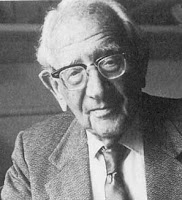Perhaps
the best way of approaching this PhD may be heuristic.
According
to Wikipedia, Heuristic
refers to experience-based techniques for problem solving, learning, and
discovery that gives a solution which is not guaranteed to be optimal. Where
the exhaustive search is impractical, heuristic methods are used to speed up
the process of finding a satisfactory solution via mental shortcuts to ease the
cognitive load of making a decision. Examples of this method include using a
rule of thumb, an educated guess, an intuitive judgment, stereotyping, or common
sense.
In more precise terms, heuristics are
strategies using readily accessible, though loosely applicable, information to
deal with problem solving in human beings and machines. The most fundamental
heuristic is trial and error, which can be used in everything from matching
nuts and bolts to finding the values of variables in algebra problems.
 |
| Geoge Pólya |
The following heuristic approaches come
from Geoge Pólya’s book How To Solve It published in 1945. George
Pólya was a Hungarian mathematician noted for his work in heuristics and
mathematics education.He was a professor of mathematics from 1914 to 1940 at
ETH Zürich and from 1940 to 1953 at Stanford University. He made fundamental
contributions to combinatorics, number theory, numerical analysis and
probability theory.
· If
you are having difficulty understanding a problem, try drawing a picture.
·
If
you can't find a solution, try assuming that you have a solution and seeing
what you can derive from that ("working backward").
·
If
the problem is abstract, try examining a concrete example.
·
Try
solving a more general problem first (the "inventor’s paradox")
“ The inventor's paradox is a phenomenon that occurs in seeking a
solution to a given problem. Instead of solving a specific type of problem,
which would seem intuitively easier, it can be easier to solve a more general
problem, which covers the specifics of the sought after solution. The inventor's
paradox has been used to describe phenomena in mathematics, programming,
and logic, as well as other areas that involve critical thinking.”
George had lots of advice for dealing
with learning. His advice to teachers (which can apply to students as well)
reflects his own common sense approach:
•
Be
interested in your subject.
•
Know
your subject.
•
Know
about the ways of learning: The best way to learn anything is to discover it by
yourself.
•
Try
to read the faces of your students, try to see their expectations and
difficulties, put yourself in their place.
•
Give
them not only information, but "know-how," attitudes of mind, the
habit of methodical work.
•
Let
them learn guessing.
•
Let
them learn proving.
•
Look
out for such features of the problem at hand as may be useful in solving the
problems to come -- try to disclose the general pattern that lies behind the
present concrete situation.
•
Do
not give away your whole secret at once - let the students guess before you
tell it - let them find out by themselves as much as is feasible.
•
Suggest
it, do not force it down their throats.
So I will
perhaps stumble my way through signs by trial and error, or perhaps it would be
more appropriate to classify my research methods as error and trial. The
mistakes have already been made and it will be a trial to put them right. Ho
Hum.
No comments:
Post a Comment